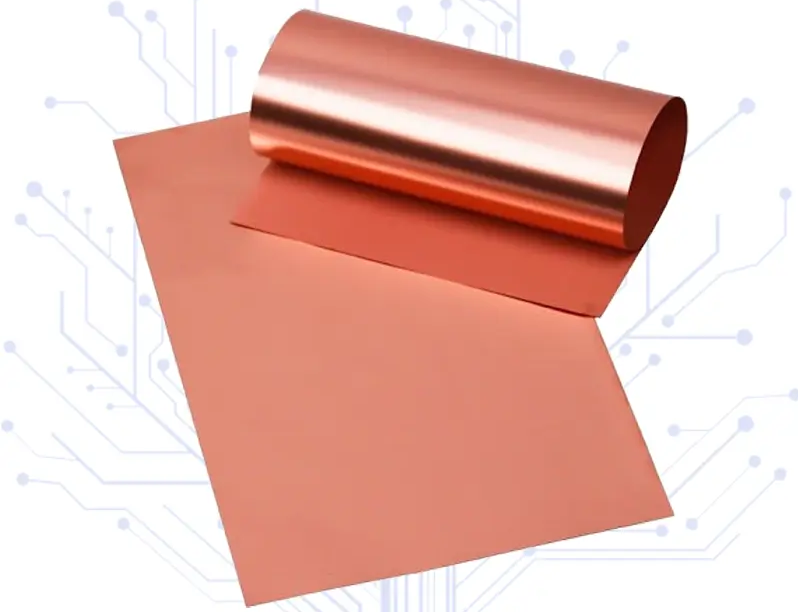

Today, we will introduce 8 kinds of main copper foil in PCB manufacture, let’s start from ED copper foil and RA copper foil.
1. ED copper foil
Electrodeposited copper foil refers to copper foil made through an electroplating process. This manufacturing process involves the deposition of copper ions onto a cathode roll under the influence of direct current, forming the base foil. ED copper foil is widely used in the PCB and lithium battery sectors due to its low production cost and relatively low technical barrier. The purity of ED copper foil is typically 99.8%, offering good electrical conductivity and cost-effectiveness.
2. RA copper foil
Rolled Annealed Copper Foil, on the other hand, is produced through a physical processing method. It starts with the extraction of crude copper from copper ores, followed by melting and processing, and electro-refining to create copper ingots approximately 2mm thick. These ingots are then acid washed and degreased, and subjected to hot rolling and annealing processes at temperatures above 800°C multiple times to produce RA copper foil. This type of copper foil has a higher purity of 99.9%, and it is known for its excellent ductility and resistance to bending, making it suitable for applications requiring high flexibility.
Next, we will introduce HTE and RTF copper foil.